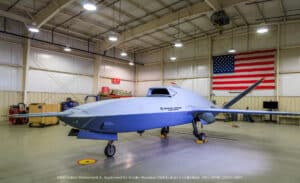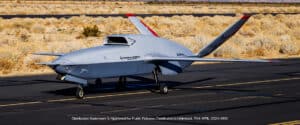
The aircraft was built in partnership between General Atomics Aeronautical Systems, Inc. (GA-ASI) and the Air Force Research Laboratory (AFRL). A new video showing the aircraft is currently posted across the various GA-ASI social media accounts.
General Atomics spokesman Mark Brinkley talks about the new model:
“General Atomics Aeronautical is very excited to introduce the XQ-67A Off-Board Sensing Station (OBSS) to the world for the first time. We think you’re looking at the future of unmanned combat air vehicles. There is a lot of talk about UCAVs and what the future might hold. But as people learn more about the XQ-67A OBSS and how the Air Force Research Laboratory and General Atomics have approached this project, they’ll discover it really is unlike anything they’ve seen so far.
Specifically, XQ-67A is an AFRL program, and GA-ASI was selected to design, build and fly that new aircraft. Without getting into specifics, I can say that we are stepping through that program methodically and working closely with our government partners to hit all of the markers for the project and deliver on our promises. We’re focused on speed to ramp, accelerated design processes, and bringing true capability to the fight.
The XQ-67A OBSS is another milestone achievement for our team and we’re very proud of it, and so grateful to AFRL for the opportunity to partner on this project. It’s a very exciting time. We’re looking forward to getting into the deep details about the airplane very soon.
General Atomics has developed UAVs for more than 30 years, designed more than two dozen different aircraft, and delivered more than 1,100 airframes. Our Predator and Reaper aircraft are known throughout the world. Our jet-powered MQ-20 Avenger UCAV has more than 30,000 flight hours, and has served as an operationally relevant test platform for some of the most advanced AI pilots invented so far. Our work in advanced autonomy is unmatched. This is all we do.”
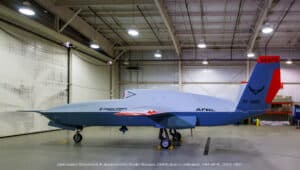
The XQ-67A presented by General Atomics shows an airframe profile similar to that of other autonomous jets under development, such as the Kratos XQ-58 Valkyrie or the Boeing MQ-28 Ghost Bat.
Kratos is a U.S. defence drone company with many years of experience working with the federal government, large government contractors and key agencies, such as the U.S. Department of Defense, Department of Security Interior and various branches of the military.
The XQ-58A Valkyrie is the first example of a new class of high-performance unmanned aircraft that can be rapidly built and deployed in large numbers, and will work in teams with manned aircraft. A concept known as Collaborative Combat Aircraft (CCA).
To cope with the increasing costs of manned combat aircraft, the United States Air Force asked the Air Force Research Laboratory (AFRL) to develop a high-performance, inexpensive aircraft. Kratos UAS built the Valkyrie in partnership with AFRL.
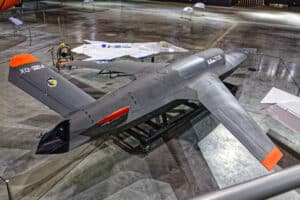
The Valkyrie does not use a landing strip. It was launched using a rocket from a launch vehicle and transport trailer, and landed using parachutes and airbags to cushion the impact with the ground. The aircraft has an internal weapons bay for small munitions tested in later flights with other XQ-58A aircraft. Development of the XQ-58A took place under the AFRL’s “Low Cost Attritable Aircraft Technologies” initiative in 2019.
Kratos has already delivered several examples of the XQ-58 for flight testing with the USAF and US Marine Corps.
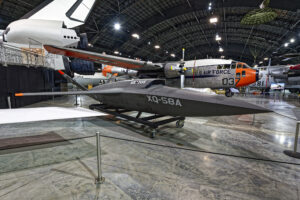
Boeing is developing the MQ-28 in partnership with the Royal Australian Air Force, but has delivered at least one example to the United States for flight evaluations.
It is not yet clear whether General Atomics intends to offer the XQ-67 for the CCA role. The company is also developing an autonomous jet concept called Gambit, which appears suitable for the CCA mission.
